A exhibition at “CHAOS 2020”
A exhibition at “CHAOS 2020”
Mikiya Takimoto, a judge for the 2020 New Cosmos of Photography (the 43rd edition of the contest), has been active as a photographer and cinematographer on the forefront of many fields, including advertising and movies, while energetically engaging in his artistic pursuits, holding numerous exhibitions and publishing photographs.
Given that all areas of society suffered from the tremendous impact of COVID-19 in 2020, we asked Takimoto how he, as one of Japan's leading creators, spent the year and how he plans to connect this experience to his future works.
While the state of emergency was in effect, every project I had planned came to an abrupt stop. Nevertheless, I had some work that I really needed to finish before the government restricted travel, so I was shooting right up to day the state of emergency was announced. I was hesitant to go home to my family, so I lived in self-imposed isolation for a while. Because of the hardship everyone was under, I tried to reach out to people I don't often meet and I called friends overseas and people I know who live by themselves to talk.
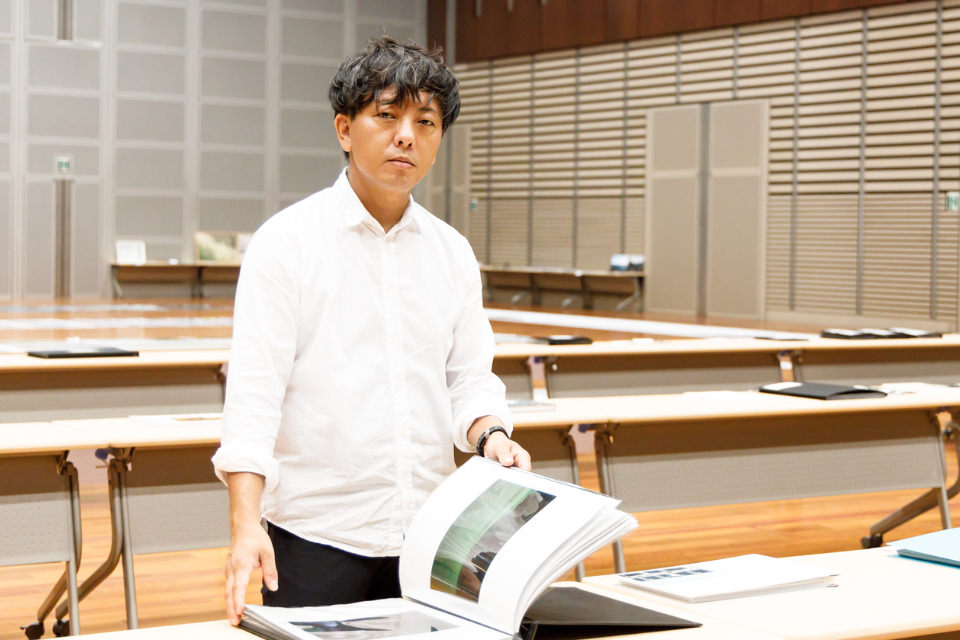
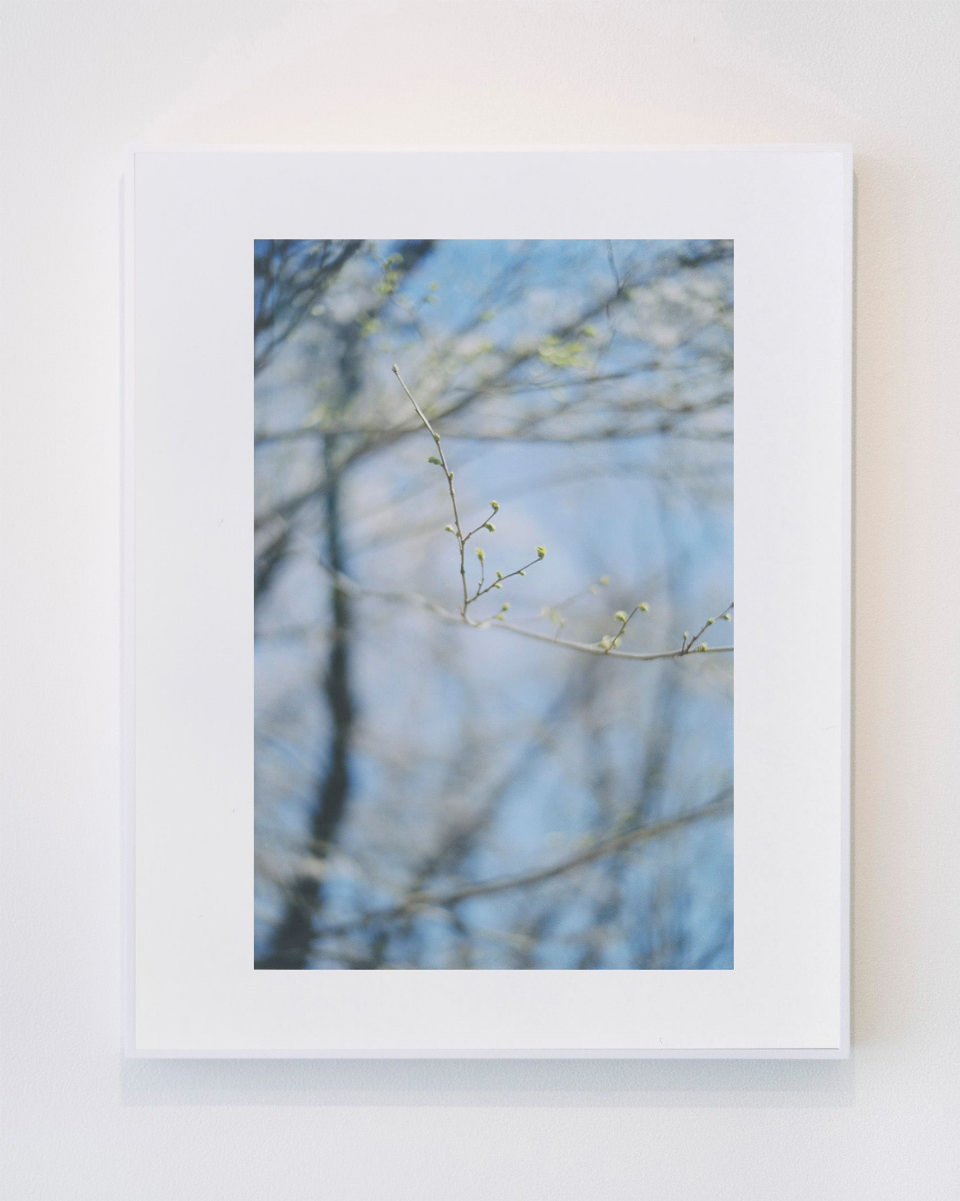
FLEUR #06
After I finally returned home, I was offered a job to shoot a commercial at home. I usually shoot aerial scenery, but in this case, I had to shoot the commercial without coming in contact with anyone. I had them send me the equipment and I did all the work myself — setting up the equipment and doing the light metering. It took about a week and I was on the balcony the whole time, so I ended up getting completely sunburned. [laughs]
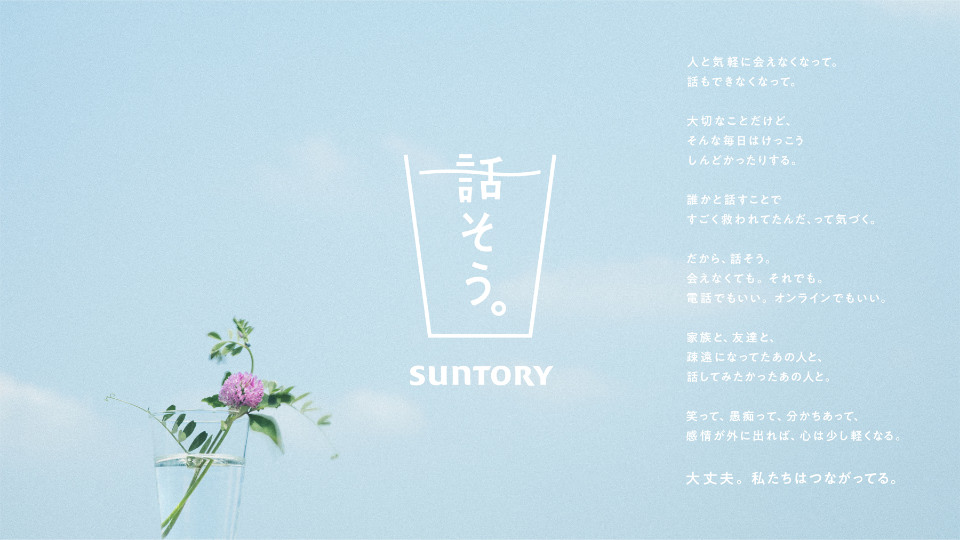
suntory, “hanasou|let's talk” television commercial
I have always lived and worked while engaging with other people, so suddenly being alone was a huge turnaround for me. It was tough at times, but one time when I was walking outside, I found a wildflower that was in perfect bloom. Almost instinctively I took a number of snapshots of it. And in that moment, I was struck emotionally by the pure joy of taking photographs.
With the loss of the everyday routines that we all had taken for granted, I felt as if the Earth had given me the power to draw people back to a more biological state. Living as we do in the midst of a developed civilization, it's easy to delude ourselves into believing we can control everything. But we must not lose sight of how privileged we are to live on this Earth.
I hope to exhibit the flower photos in Nagoya in February 2021. I already presented one of them at my solo exhibition in Kyoto [at the KYOTOGRAPHIE International Photography Festival 2020].
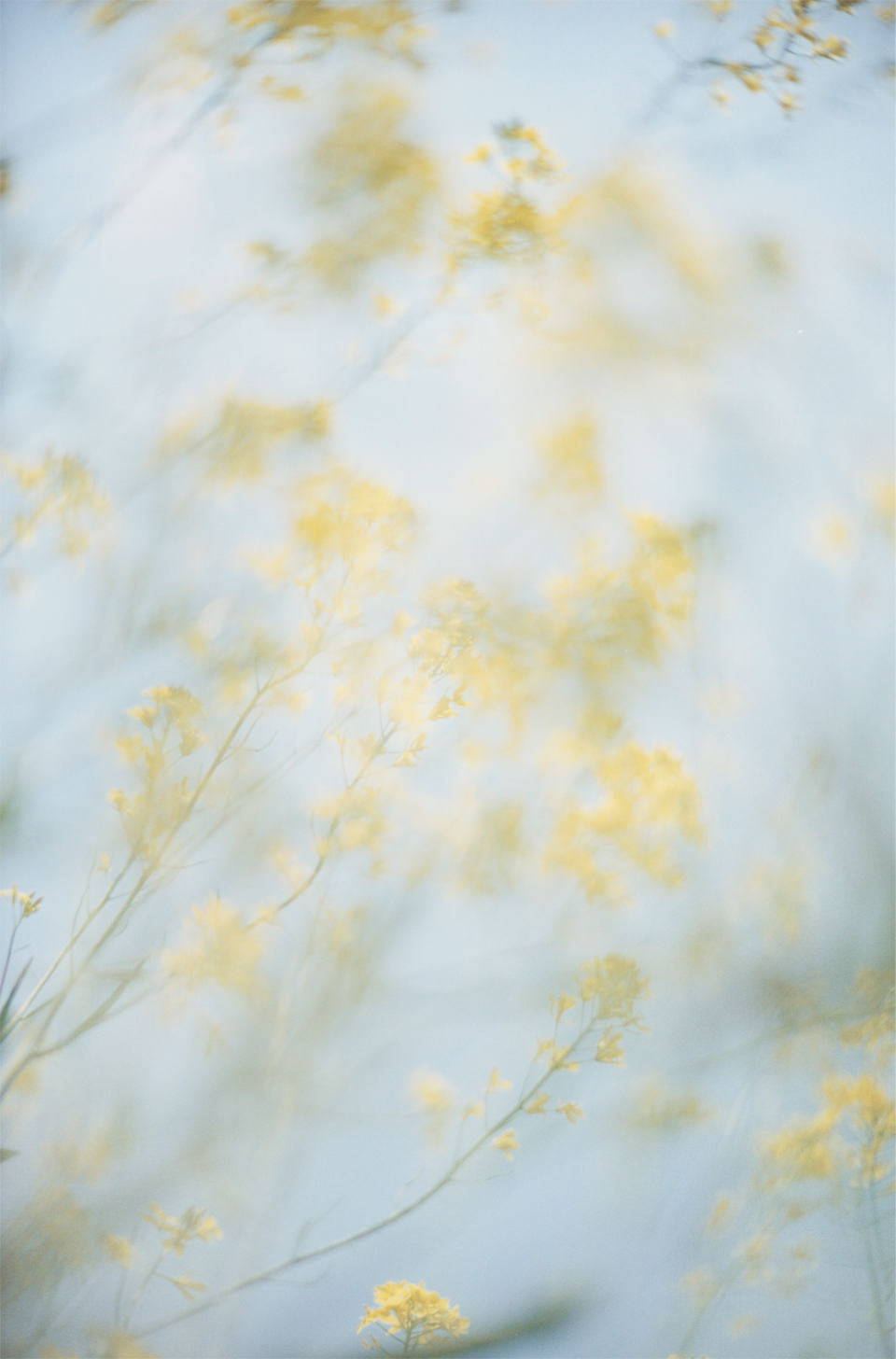
FLEUR #01
Myomanji is a historic temple famous for its dry landscape garden called Yuki no Niwa [Snow Garden]. I was able to use the large drawing room leading to the garden as an exhibition space. Because of the temple's long history, I tried to compose the exhibits to harmonize with the space as much as possible. With that idea, I decided to arrange the works like a garden you can stroll around in, with snowy mountains as the theme.
A temple's interior is formed essentially by pillars, sliding doors, and sliding shoji doors. There are no walls to hang pictures on. So I had little choice but to exhibit my photographs following the traditional method of sliding door paintings. I thought ink and wash paintings are the most suitable for sliding door paintings, so I exhibited monotone photographs and tailored them to look their best when viewed in the temple.

A exhibition at "CHAOS 2020", Sliding panel paintings were also made.
I glued giclée prints to the sliding doors. I had to wet the paper to apply the glue, so I tested several kinds of paper and chose the one that worked the best. The sliding doors were built especially for this project to match the large drawing room. I asked a sliding-door framer and paperer who has worked at Ryoan-ji Temple, which is famous for its rock garden, and even served the Imperial Household Agency to make the panels. The latticework is made entirely of Japanese cypress, and the four edge rails are coated with many layers of lacquer. As you said, it took a lot of trial and error to complete the work. But I thought the process was very interesting, so I made a video of it.
Stones are placed in a traditional dry landscape garden to represent mountains. Because of Myomanji Temple's famous Yuki no Niwa garden, I arranged works depicting snowy mountains on the tatami floor to form an exhibit that resembles a traditional dry landscape garden.
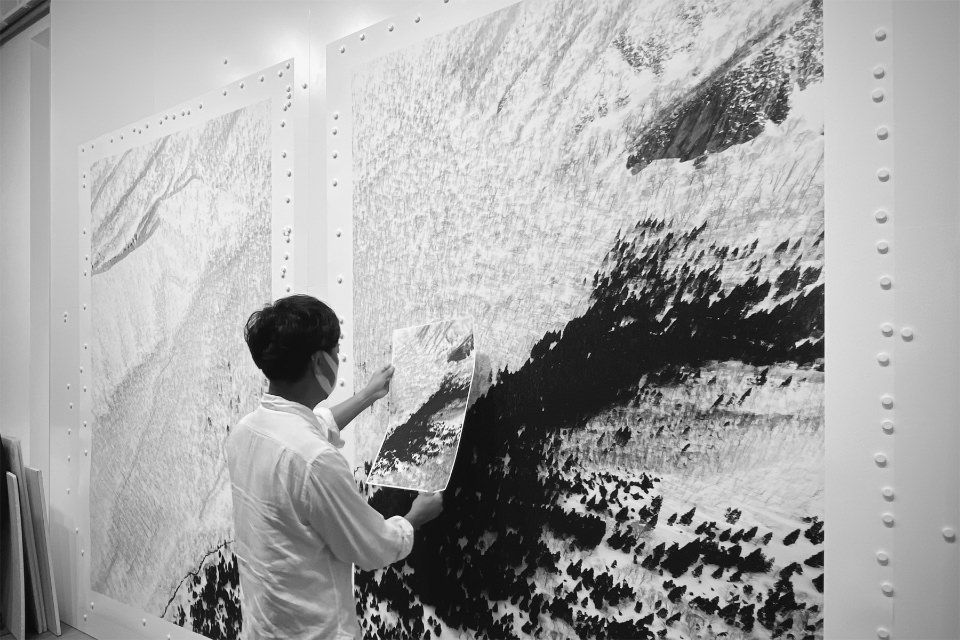
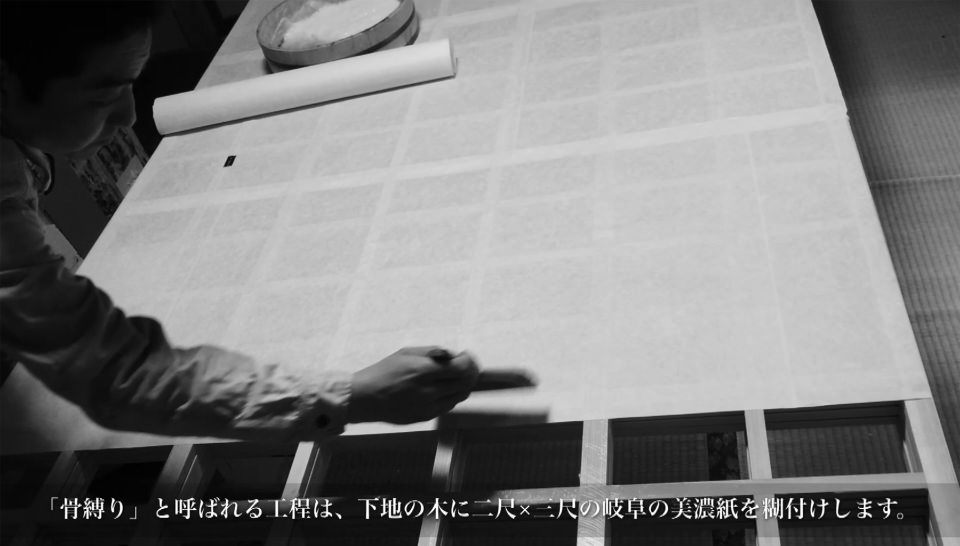

SNOW MOUNTAIN 2020 Fusuma Making Movie
* In order to view videos, it is necessary to consent to the use of cookies by our website. If the videos are not displayed, please click the "Cookie Settings" and accept cookies.
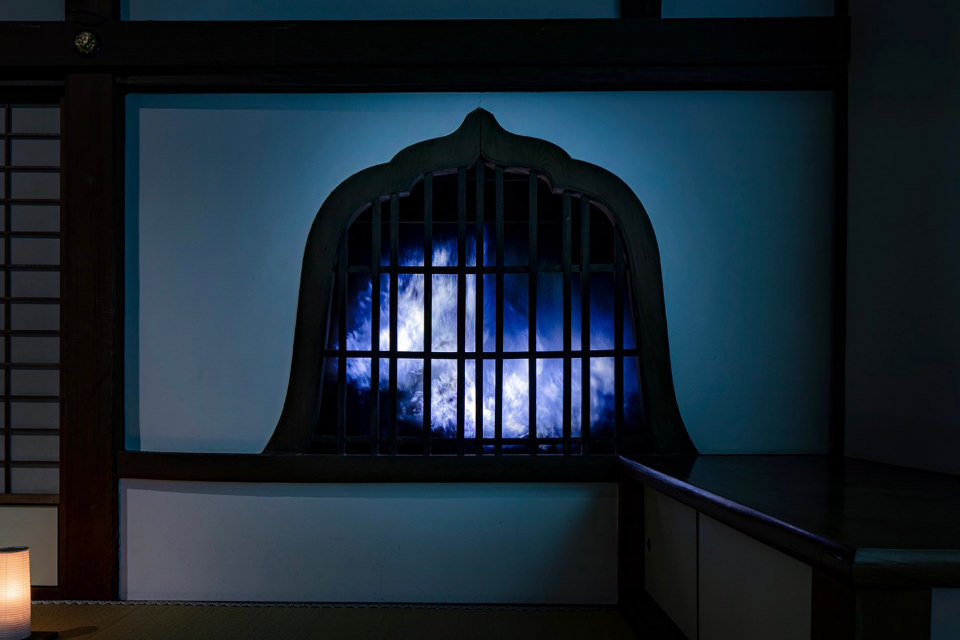
Borrowed scenery installation using fire light window.
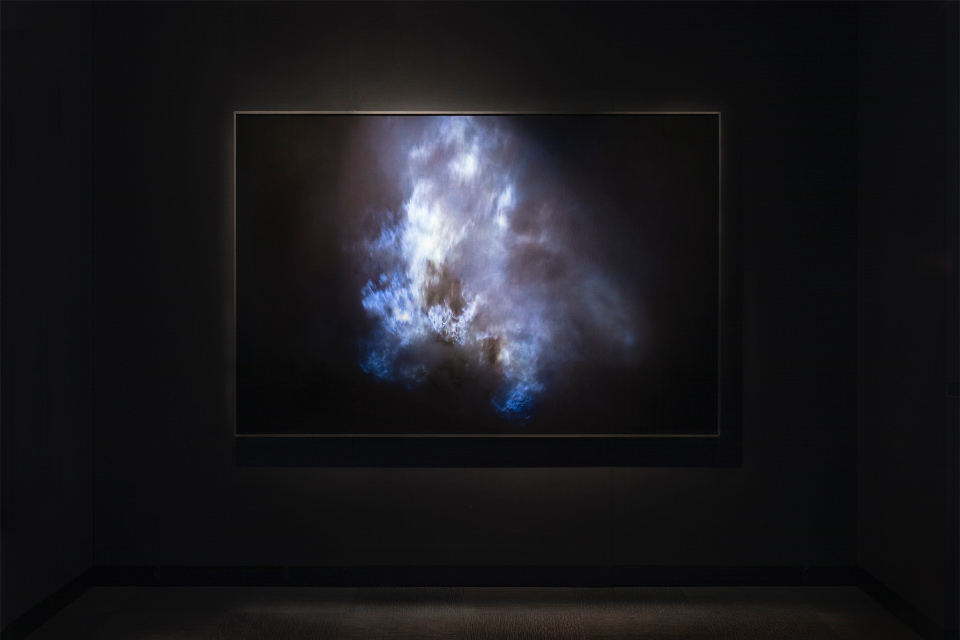
FLAME #02, CANON GALLERY S, 2017
An interesting part of the culture of Japanese architecture is the use of window frames and the openings created when shoji doors are opened to, in a sense, crop the view of the outside world. For one installation, I made use of the kato-mado bell-shaped window in the large drawing room to create this effect. The work is actually placed behind the window frame, but when you stand in front of it and look at it, it seems as if a nebula is stretching out beyond the window. This work was actually taken at the Ijen volcano complex in Indonesia. The flickering azure flames are a phenomenon called blue fire, which is caused by the natural ignition of sulfur gas that flows out from cracks in the volcano's surface. It was one of the series presented in my solo exhibition FLAME / SURFACE at Canon Gallery S in 2017.
I decided to try shooting in digital for the first time using a Canon EOS 5Ds R for a new work to be shown at a solo exhibition. And I decided on this project because I figured I could shoot in the volcano with this camera. Nevertheless, the electric-blue flames only appear vivid in the darkness at night, and you have to get very close to capture them properly. It's an extreme environment with sulfur gas blowing out from cracks in the rocks at temperatures as high as 600-degrees Celsius, and the terrain is such that setting up a tripod is very difficult. It was a place I had long wanted to photograph, but I had never been able to carry it out before. It's such a hazardous environment that I wore a gas mask to take the pictures.
Although the scale of nebulae and volcanoes on Earth are completely different, the light of this flame is similar in nature to the light of a nebula, given that both are the creations of celestial bodies. I wanted visitors to experience the micro and macro in this exhibition and feel the universe in the space of the temple.
FLAME #03 CHAOS 2020
* In order to view videos, it is necessary to consent to the use of cookies by our website. If the videos are not displayed, please click the "Cookie Settings" and accept cookies.
I tried a lot of other things out for the CHAOS 2020 exhibition, and I also held the LAND SPACE 2020 exhibition in the streets of Kyoto at the same time. I prepared for the exhibitions not sure of whether the venues would be open or not because of COVID-19. Just in case, I documented both exhibitions as 3D online exhibits. And because of this, I have been able to present these works online after KYOTOGRAPHIE closed.

Kengo Kuma is widely known for his use of wood materials in his buildings. This feature of his work apparently started when he was involved in constructing buildings using local materials in Yusuhara, Kochi Prefecture, which has a thriving forestry industry. He has worked on six buildings to date in the town, including the Yusuhara Town Hall and the Yusuhara Community Library, dubbed “the library above the clouds”. I produced and submitted a video of these buildings. I decided to shoot the video in black and white to bring out the expressiveness of the woodwork. I shot the buildings at night, illuminated by HMI lights installed on articulated lift trucks. This way of shooting made the contours of the buildings appear like symbols against the background, as if blotting out the background with black. Also, because I'm greedy [laughs], I took photos at the same time as the videos since I was already there. I plan to publish them as a photo collection soon.

Yusuhara Town Hall
From KUMA KENGO:FIVE PURR-FECT POINTS FOR A NEW PUBLIC SPACE
For several years now, I've been experimenting with taking shots of the sun's corona. The new coronavirus that caused this pandemic was named corona because of its resemblance to the sun's corona, which surprised me, even if it was just a coincidence.
I use a super-telephoto solar telescope in order to take pictures of the sun. There are only a few days a year when the atmosphere is stable enough in Japan to photograph the sun, because the skies are susceptible to atmospheric effects and jet streams flow in the upper altitudes above the country. That's why I need to go to places like Arizona in the U.S. or Atacama in Chile where the conditions are more favorable.
This is more of an observation project than a simple photography project. And there are many technical hurdles to overcome in order to create my ideal image. So I'm still trying to figure out the best approach.
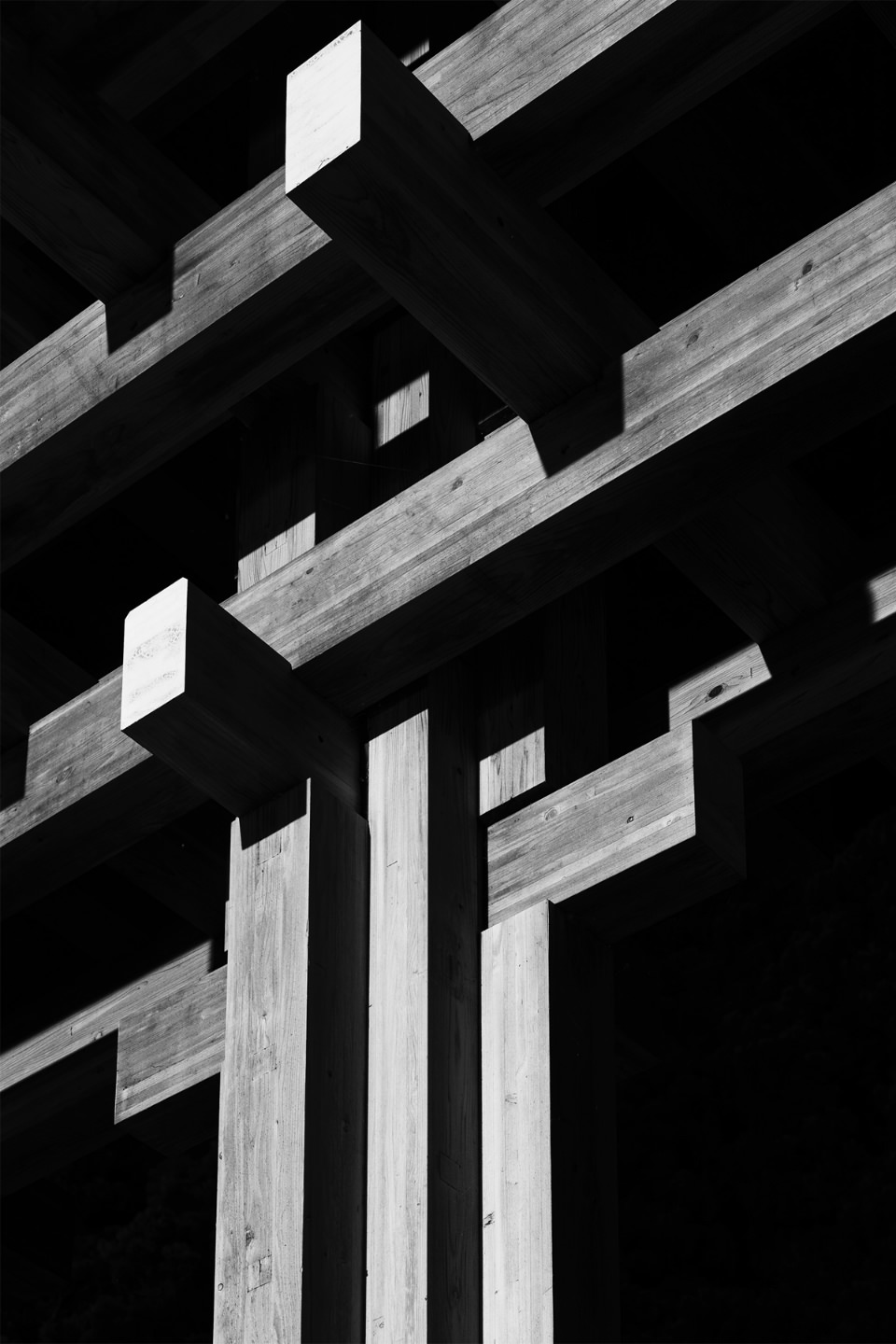
Kumo no ue no Gallery
Born in Aichi Prefecture in 1974. Apprenticed to Tamotsu Fujii in '94. Went independent in '98 and founded the Mikiya Takimoto Photograph Office. Active in a wide variety of fields spanning everything from advertising photography, graphic art and editorial work to personal creative endeavors, commercial films, and cinema. Major photo collections include CROSSOVER ('18), LAND SPACE ('13), SIGHTSEEING ('07), BAUHAUS DESSAU ∴ MIKIYA TAKIMOTO ('05). kiyIn 18 years held a solo exhibition “FLAME / SURFACE” at CANON GALLERY S.
Also began filming movies in '12. Debut film “Like Father, Like Son / Soshite Chichininaru”( directed by Hirokazu Kore-eda ) won the Jury Award at the 66th Cannes Film Festival's Competition Category. Received Best Cinematography Award at the 39th Japan Academy Awards for “Our Little Sister” in '15. “The Third Murder / Sandome no Satsujin” plays In Competition at the 74th Venice International Film Festival. Has also won many other commendations such as Tokyo Art Directors Club ADC Awards, New York ADC Annual Awards Winners, Cannes Lions International Festival of Creativity, ACC Commercial Festival Grand Prize, New York CLIO AWARDS.